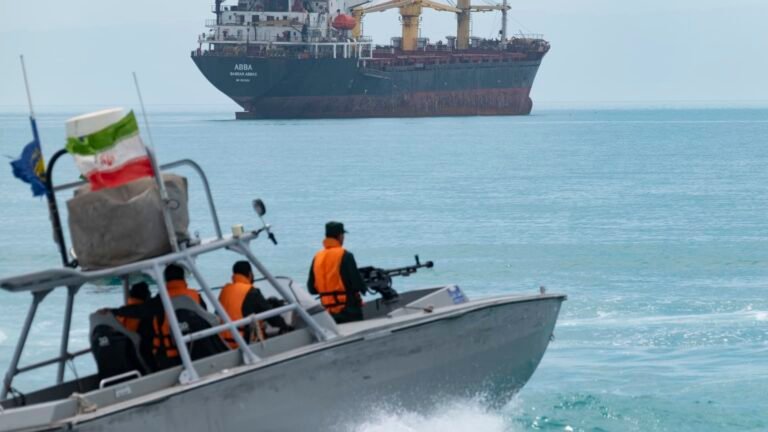The conflict in the Middle East has led many insurance underwriters in the maritime shipping market to avoid offering coverage to any U.S., Israel, or U.K.-linked vessels.
“Many underwriters are not touching vessels with perceived U.S., U.K. or Israeli links at any price,” said David Osler, insurance editor for Lloyd’s List.
According to insurance broker Marsh McLennan, rates among insurance companies that are offering coverage to vessels are now ranging between 0.25%-0.45% of ship value, up from 0.125% a few weeks ago.
These rates were consistent over the previous week, but after the U.S. strikes over the weekend on Iran nuclear sites, Middle East marine war risk rates “hardened significantly,” according to Osler.
By the end of the day on Monday, pricing had risen to as high as 0.5%, and was even higher for U.S.-affiliated ships.
Osler tells CNBC because of the fluidity, underwriters also cut the required notification period from 48 hours to 24 hours.
“The certainty we can convey is that we can get insurance. The uncertainty is the pricing,” said Marcus Baker, global head of marine, cargo, and logistics at Marsh McLennan.
Baker told CNBC he cannot remember a time when the notification period was reduced from 48 hours to 24 hours.
Middle East ocean freight rates have also experienced a surge.
Among issues that are influencing the insurance market are concerns about Iran blocking and trapping ships, and the level of appetite from China, a big customer of Iranian oil. President Trump said in a social media post on Tuesday that China can keep buying Iranian oil, a signal the U.S. was not intent on maximizing pressure on Iran’s economy.
“If there was a pullback from China, there would be less call for war risk, so the simple laws of supply and demand suggest it should calm rates,” said Osler.
Osler said rates should ease off if the current tentative ceasefire holds, based on information he has received from insurance market sources, but the headlines Tuesday indicating Iran and Israel were possibly not as close to de-escalation as the U.S. had hoped are now weighing on the outlook.
“This just gets to the heart of the nervousness that we’re seeing in the marketplace, because they just, don’t know, and things are happening so fast. I mean, in Trump’s interview this morning, I don’t know what that’s going to do, but he’s obviously angry,” Osler said of President Trump’s comments to the press before he left for a NATO summit when he said he was “not happy” with Israel and Iran, after having announced the ceasefire on Monday night.
“The developments effectively put the market in wait-and-see mode, with conditions volatile as underwriters come to terms with political developments as they unfold,” Osler said. “Inquiries are said to be well down, which indicates that some owners are not prepared to take bookings to the region, given the military situation.”
Baker said a decision by Iran to shut down the Strait of Hormuz has political and economic aspects, and practical issues for China and India, the largest destinations of Iranian crude, not to mention the reaction from other Middle Eastern nations to consider, incuding Saudi Arabia, Qatar, and Oman.
Last Wednesday, the Joint War Committee of Lloyd’s of London’s war risk underwriters met, where they released a list of designated areas underwriters have the discretion, but not the obligation, to levy additional premiums or APs. This list remains unchanged.
In an updated threat circular from British maritime security firm Ambrey released on Tuesday, it wrote, “There is a realistic possibility that the conflict between Israel and Iran will continue/restart, and there may be subsequent U.S. involvement, but the risk of U.S. involvement is assessed to have lowered. However, the Gulf is generally taken to be part of the wider Indian Ocean listed area and links to the listed Red Sea. This means that in practice, shipowners must provide insurers with notification of transits.”
Baker said it is important to put the rise in rates in context of recent conflict zones and shipping.
“Ukraine rates went up to 5% and we’re only, we’re not even a tenth of those rates yet,” he said. “Five percent of around a million dollars, or a million and a half dollars, depending on the size of the ship. It was a very significant increase in the value of grain, which was way less than the value of a cargo of oil and a VLCC [very large crude carrier]. It’s just a question of different underlies, different appetites, different risk perceptions, and that will influence where things go,” Baker added.

